
David Runciman · 29th September 2025
The best Salesforce backup tools in 2025
Finding the right Salesforce backup solution is critical. With 47% of teams experiencing at least one data loss incident in 2024 — and 19% needing days to recover when disaster strikes — you need to be sure you’ve protected your Salesforce investment through both daily operations and crisis situations.
In this article, we’ll survey the Salesforce backup market and explain the main categories that tools and vendors fall into. We’ll examine the pros and cons of native Salesforce tools, Salesforce-focused backup vendors, multi-platform backup solutions, and backup solutions within DevOps platforms.
Full disclosure: We believe Gearset’s approach — treating backups as an integral part of the development lifecycle — offers the best protection for your Salesforce data and metadata. But we’ll show you exactly why we think that, and let you decide what makes sense for your organization.
Criteria for evaluating backup solutions
First, we should identify what good looks like for a backup solution:
- Automated backups that run at least once a day so data loss is kept to an absolute minimum
- Restore workflows that allow for quick, reliable recovery under stress
- Monitoring and alerts to make sure incidents don’t go unnoticed
- Secure, compliant storage, so backups aren’t putting customer data at risk
- Protection of your whole Salesforce org — data, metadata, and configuration data
- Predictable costs
These are the criteria we’ll use to evaluate different tools in the market, and to see how different approaches to backup impact performance.
Salesforce native tools
Let’s begin with what Salesforce provides straight out of the box. These built-in tools can be tempting for teams with limited budgets, but their capabilities are limited.
Data Export Service
Salesforce’s Data Export feature is a simple, free tool for exporting CSV files of your data. It’s not intended as a backup tool, but it’s tempting to use it to export critical data for this purpose. You can schedule exports weekly (or monthly on some editions), and Salesforce will compile them into a zip file available for 48 hours. While Data Export is a free tool, you’ll also see spiraling costs from storing vast quantities of data in backups.
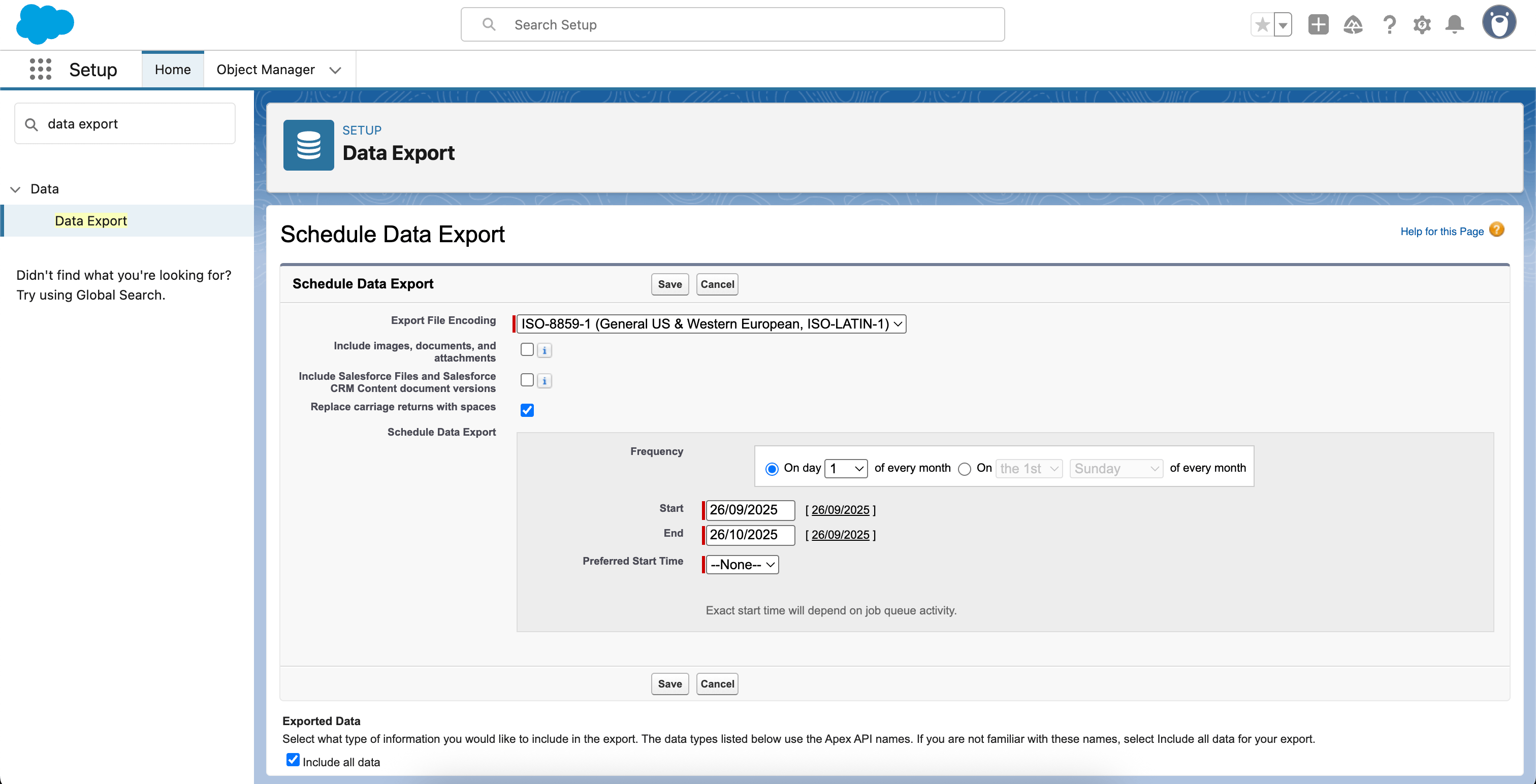
Salesforce Backup managed package
Salesforce Backup (previously “Backup and Restore”) is a paid managed package designed to help you automate backups and restore data when needed. The drawback is that it runs entirely within Salesforce itself, meaning your production data and your backups share the same infrastructure. If Salesforce has a platform-wide issue, both your live data and your backups become unavailable. The times you most need a backup are often the times this solution can’t deliver.
Backup isolation is a best practice, and that’s where Salesforce Backup (and other tools installed within Salesforce) fall down. While Salesforce’s native tools provide convenience, larger businesses will need a more resilient solution to depend on when things go wrong.
Salesforce Backup doesn’t back up metadata, so your Flows, Profiles, Permission Sets and hundreds of other types of configuration aren’t protected at all. If the metadata structure of your org has changed since the time you need to restore data, the metadata will also need restoring before you can restore data quickly and reliably.
For the Salesforce Backup managed package, Salesforce charges based on file storage, at 10% of the cost you pay for in-org data storage.
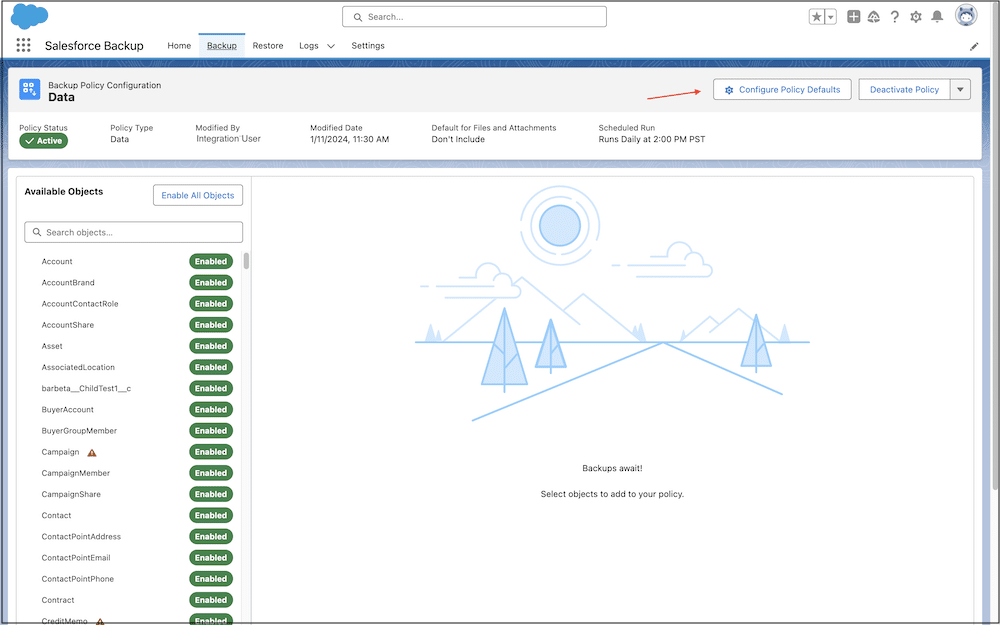
| Salesforce Data Export Service | Salesforce Backup managed package |
|---|---|
| Limited to weekly or monthly backup schedules | Automated daily backups |
| Generates CSV files that you must store, organize, and protect | Stores your data (costs based on storage) |
| No restore workflow included | Built-in restore workflow |
Salesforce-focused backup solutions
These are backup solutions built by vendors focused on Salesforce specifically, who often extend into adjacent areas like archiving and sandbox seeding.
These tools typically perform well for restoring Salesforce data, as they also back up some key metadata types that represent the structure of your org. Restoring metadata is often the clunky part of the process, however, and the vast majority of metadata types — the rest of the org’s configuration — go unprotected.
As point solutions for backup and restore, the other snag with these tools is that teams often don’t feel familiar with the tooling when they’re restoring data under pressure following an incident.
Salesforce Backup & Recover (formerly Own)
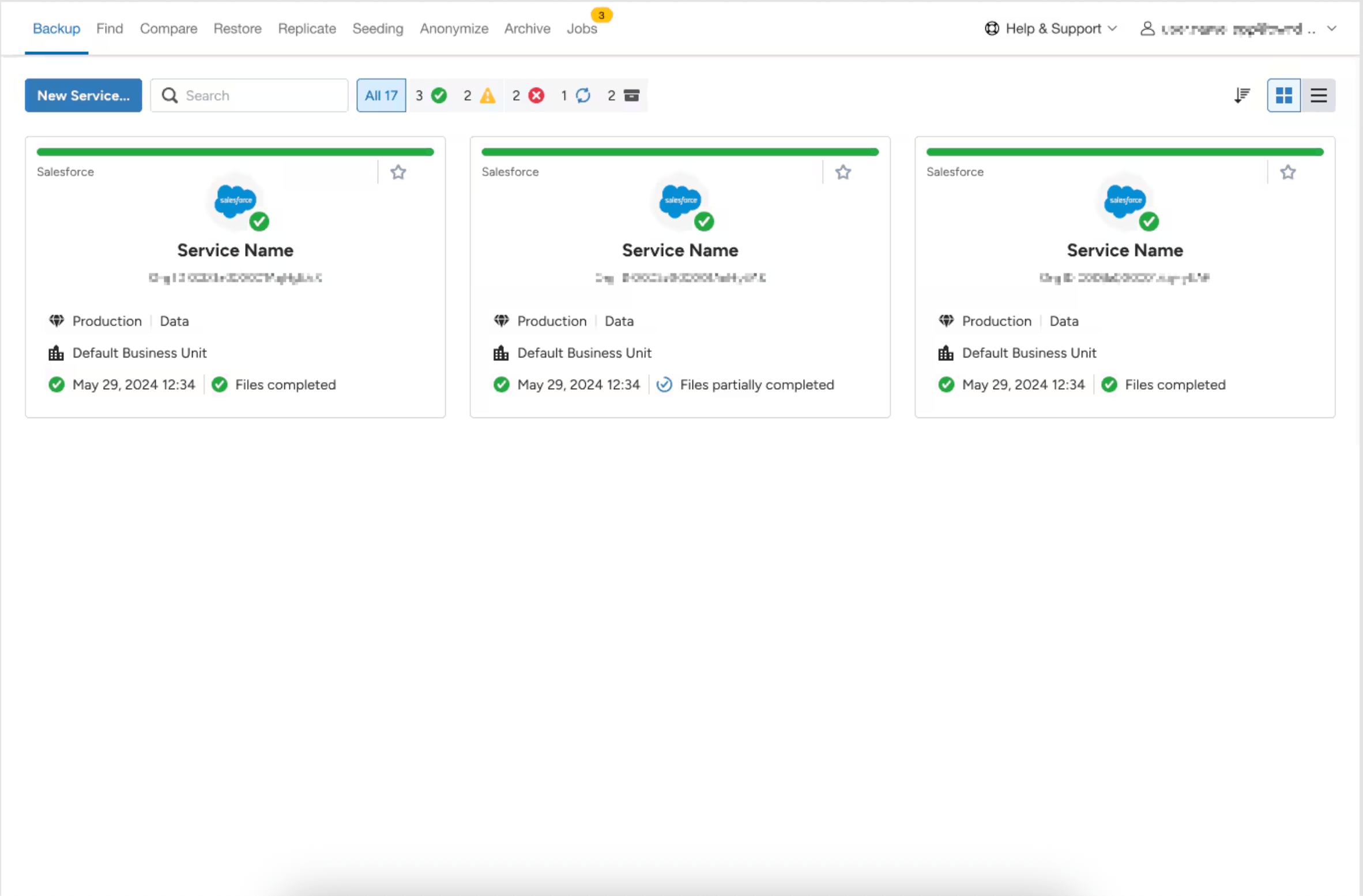
With more than 7,000 customers before being acquired, OWN was the category leader before being acquired by Salesforce and rebranded as Salesforce Backup and Recover. Automated daily backups happen smoothly, with hourly backups available for those needing tighter protection. Smart Alerts flag issues before they escalate, such as catching an accidental mass deletion. You can get side-by-side comparisons between backup snapshots to understand what’s changed, and get more granular control for restoring specific fields while keeping complex Salesforce data relationships intact.
Metadata protection is the critical weakness. For select metadata types, Backup and Recover has a restore workflow, although it’s quite basic — you may need to manually configure orgs beforehand to make sure the restore succeeds. Other metadata types supported by the Metadata API can be backed up, but you’ll need to restore those with another tool (e.g. Workbench). When you consider the investment in your org’s configuration, and the way data and metadata interact in Salesforce, the weakness in metadata backup and restoration should give any team pause when choosing between backup solutions.
Pricing is another challenge. Recover starts at $500/month, Archive at $1,000/month, and Seed comes separately. But customers often find it difficult to get firm quotes, and discounts vary dramatically depending on the competitive context. For organizations needing a mix of services, costs can escalate quickly.
Odaseva
Targeted at large enterprises, Odaseva is another Salesforce-specific solution that aims to combine backup with tools for data privacy. It offers less common features, such as “Backup for Business” that empowers end users to fix their own mistakes. Its limitations are similar to other tools in this category: metadata can be backed up but restore processes are focused on data.
Odaseva’s pricing is calculated on a variety of factors, so it’s hard to work out exact costs. Its package covering both data and metadata backups starts at $1,750 a month.
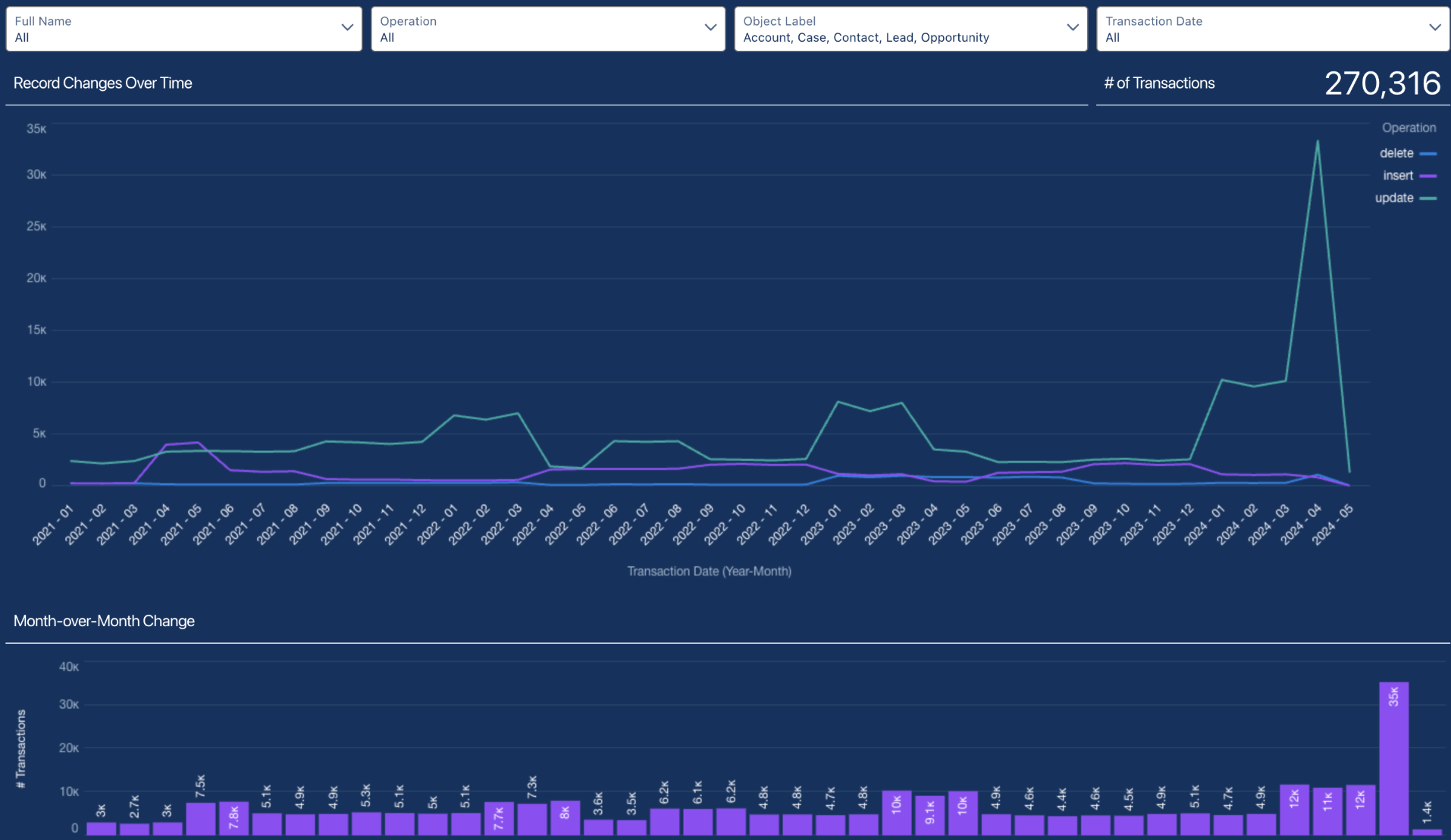
Grax
Grax’s emphasis is on your data being in your infrastructure. Its “Bring Your Own Cloud” model lets everything run in your AWS, Azure, or Google Cloud environment — or even on-premises — which appeals to some organizations with strict data residency needs. Grax also highlights data reuse, allowing the same protected data to feed analytics, AI/ML, and data warehouse initiatives.
Grax offers a free tier for backups, with the ability to restore one record at a time. Its actual pricing is fairly opaque, with reports of costs starting at $48,000 per year.
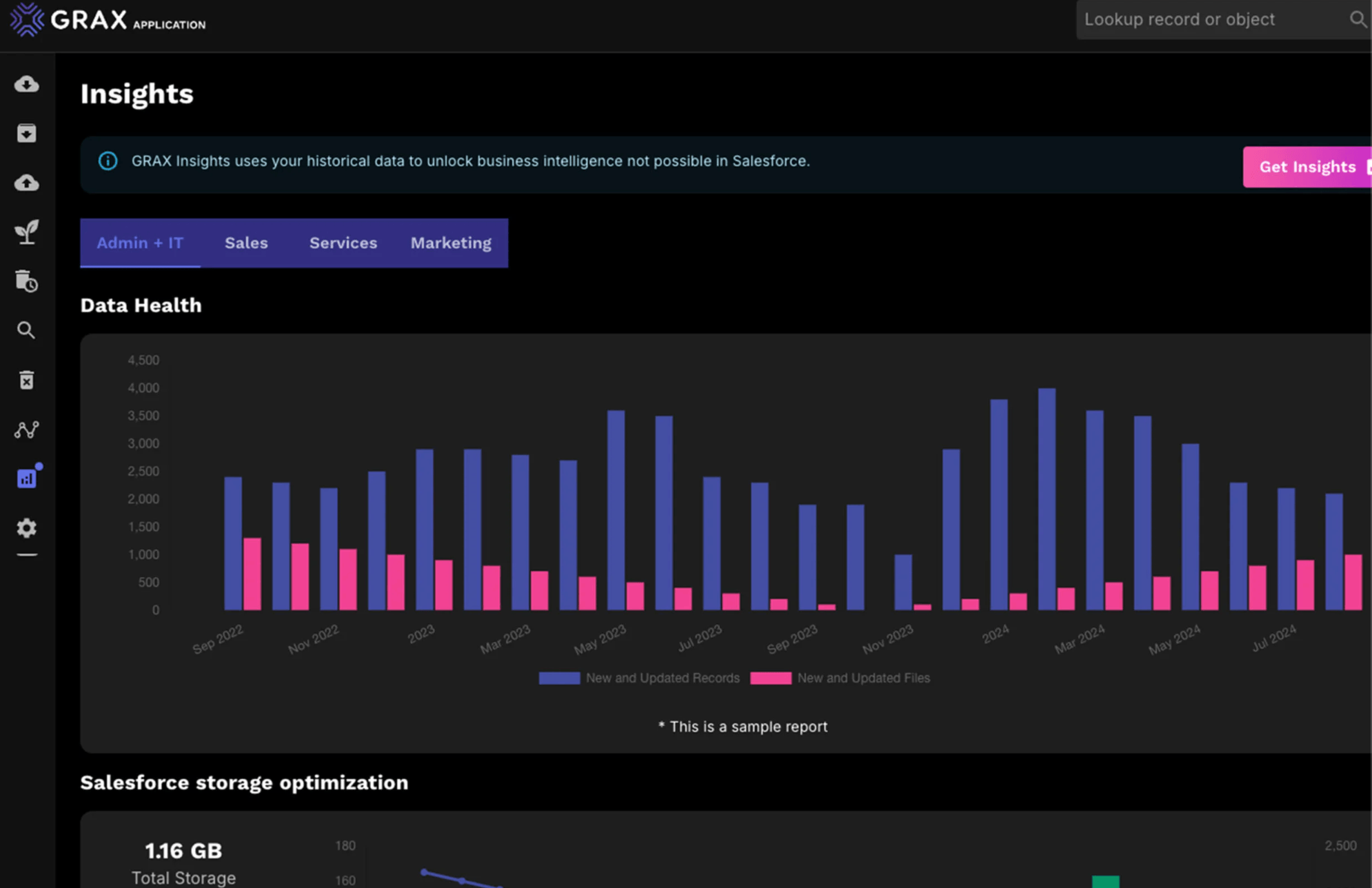
Multi-platform backup vendors
These vendors earned their standing protecting traditional infrastructure — servers, databases, virtual machines — and now extend that capability to Salesforce. The value proposition is clear: one backup provider to work with, streamlined billing, and consistent interfaces across your IT estate. The challenge is that platforms designed for broad backup often struggle with Salesforce’s unique architecture, particularly when it comes to restoring metadata.
When IT teams want to consolidate on one backup provider, it’s essential that the Salesforce development teams can test restoration capabilities. They will be brought in to help restore orgs after an incident, when it’s too late to discover that cross-platform tools aren’t well suited to the nuances of the Salesforce platform — where any data and metadata restore can easily go wrong.
Veeam
Trusted by more than 550,000 customers worldwide, Veeam brings serious credibility. It can run on AWS, Azure, or on-premises. If you already rely on them for critical infrastructure, extending that trust to Salesforce feels natural.
Veeam’s Community Edition is also free for organizations with 50 or fewer Salesforce users — a strong option for the smallest businesses. And they push backup frequency further than most, with backups as often as every five minutes. Yet Salesforce is more than just another database. Its intricate objects, relationships, and metadata dependencies require specialized tooling to restore reliably.
Veeam’s pricing is $2.6–$3 per Salesforce user per month for backup, and $3.6–$4 per user per month for archiving — depending on the size of your business.
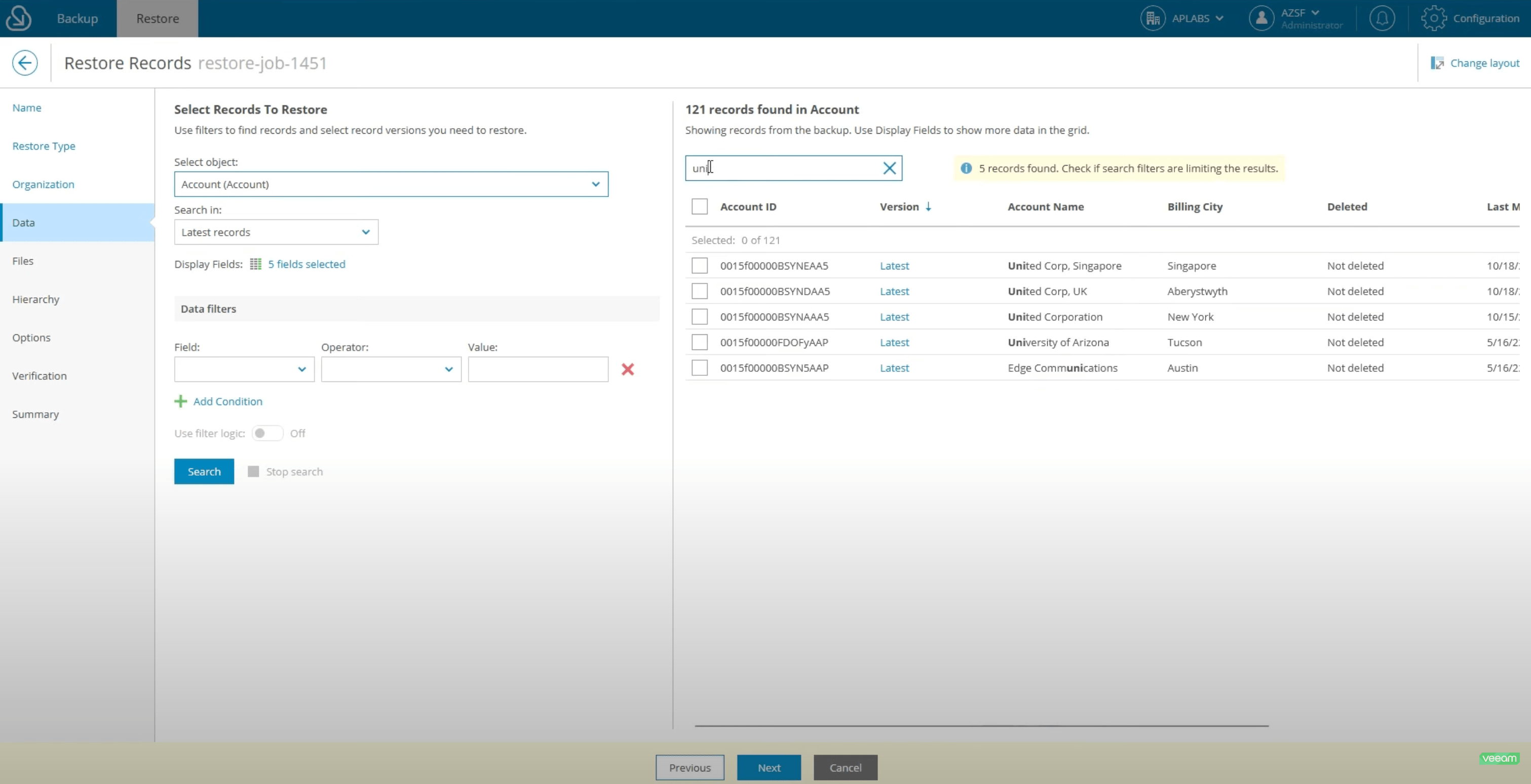
Spanning
One of the earliest entrants to the Salesforce backup market, Spanning (now part of Kaseya), focused on simplicity and native integration. The backup interface lives directly inside Salesforce, letting users restore data without leaving the platform. This does go against the best practice of backups being kept outside the platform being backed up.
Metadata coverage is limited, with only 17 metadata types supported, compared to Salesforce’s 800+ (of which 713 and counting are supported by the Metadata API). As with other solutions, this leaves large areas of customization unprotected.
Spanning doesn’t list prices, but reportedly starts at $48 per Salesforce user per year.
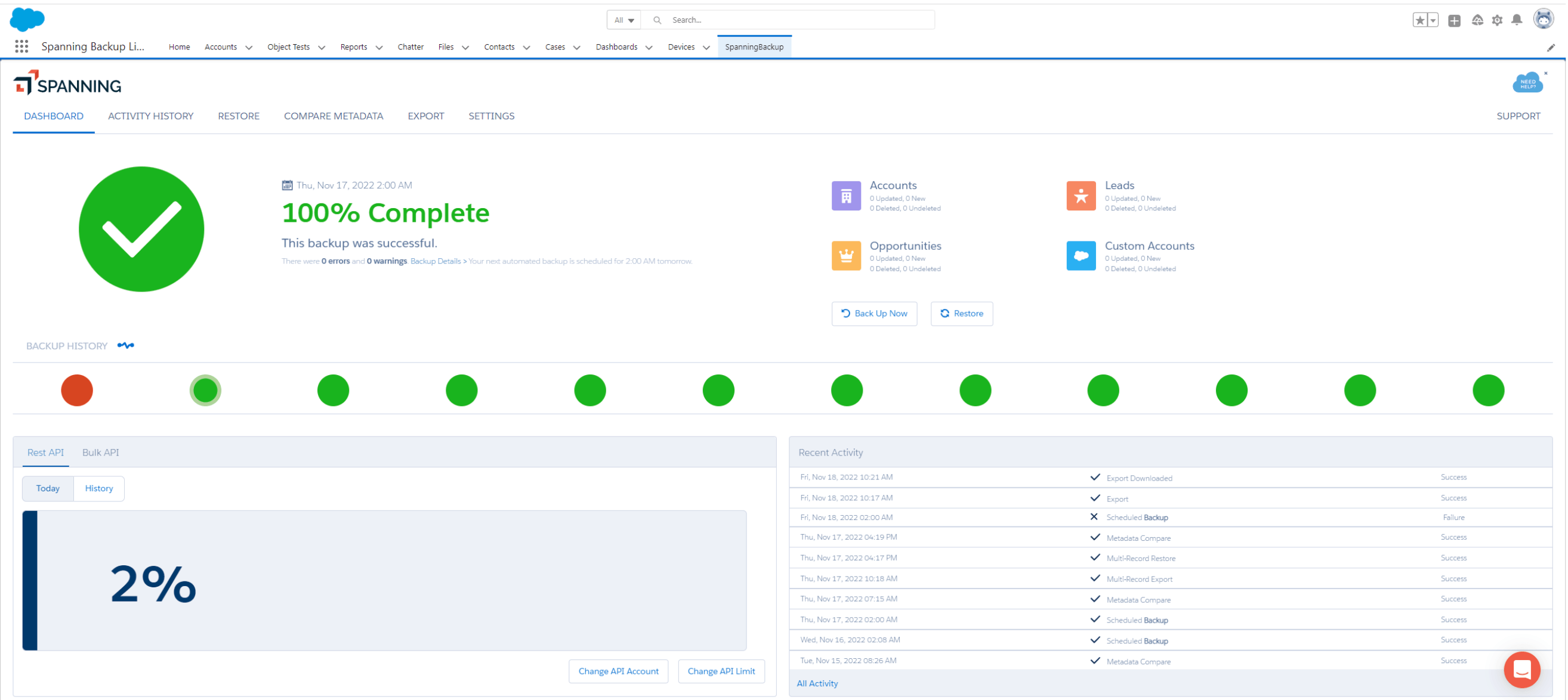
CloudAlly
CloudAlly is another cross-platform backup tool, with limited support for metadata backups. For data restoration, it offers an unusual budget-friendly option of exporting CSVs of backup data to restore with Import Wizard or Data Loader.
CloudAlly’s basic pricing is $3 per Salesforce user per month.
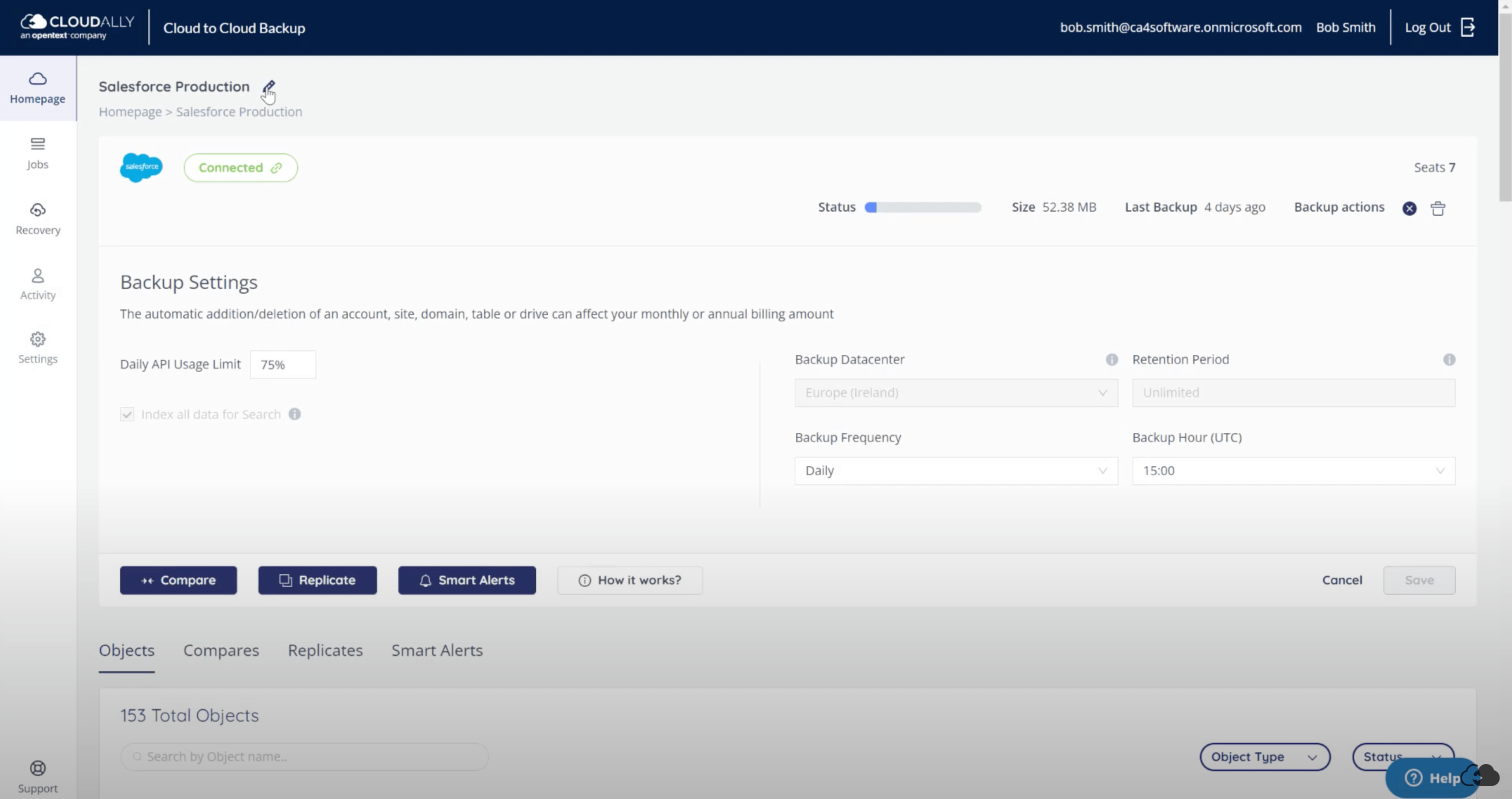
Commvault Metallic
Public sector and high-security organizations will often look at Commvault’s Metallic. With FedRAMP High Authorization, zero-trust architecture, and immutable storage — it checks every compliance box. Yet it has a reputation for being dated, and struggling with the central operations of restoring or seeding data to Salesforce.
Pricing for Metallic ranges between $2.40–$3.60 per Salesforce user per month, depending on company size.
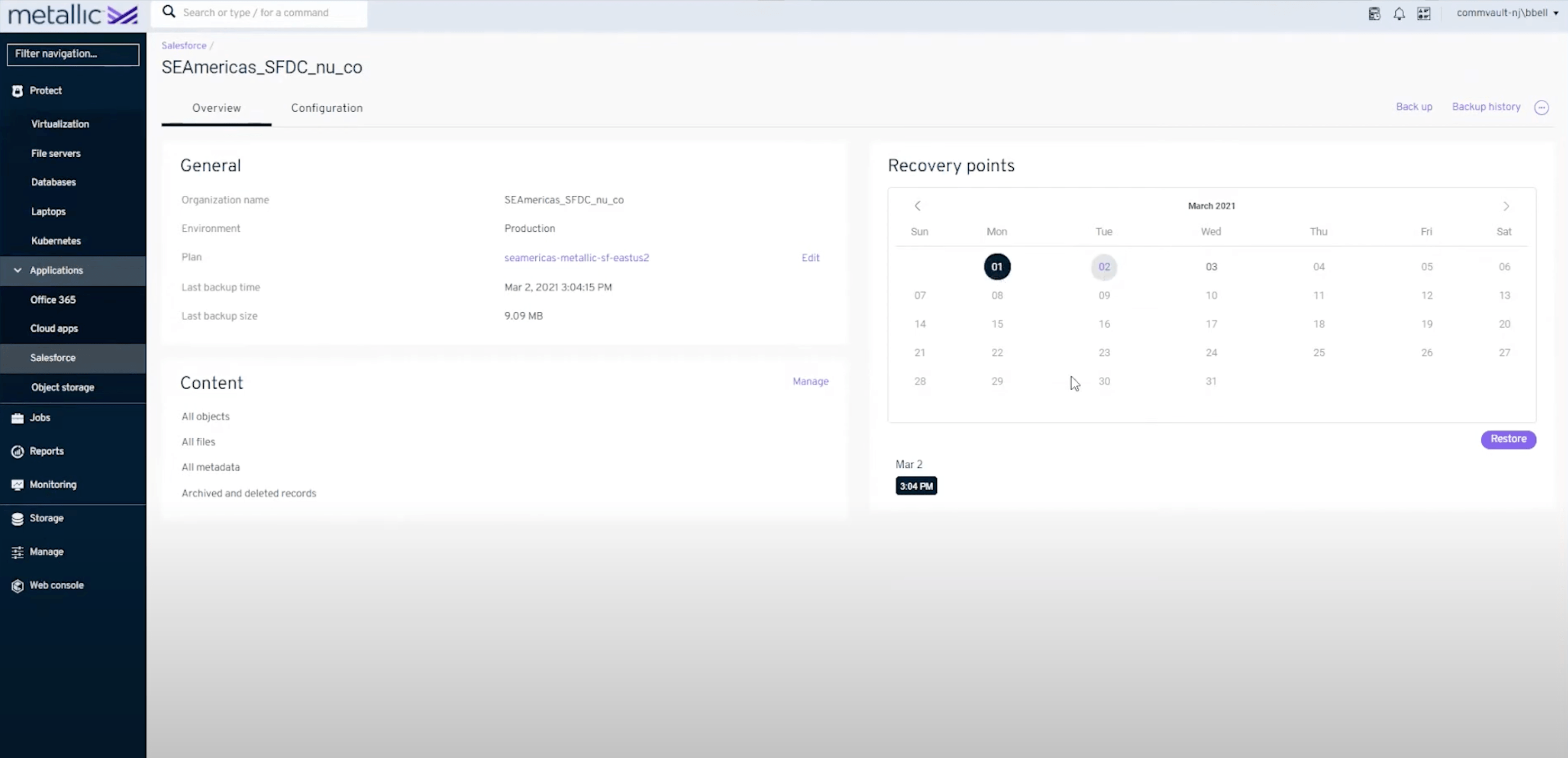
Druva
Druva aims to provide protection across platforms. For Salesforce, it offers automated daily backups, point-in-time recovery, and intelligent handling of relationships. Unusually for a cross-platform backup tool, they also offer sandbox seeding and archiving for Salesforce.
The breadth of the offering comes at a price — organizations report higher-than-expected costs as data grows. More concerning are instances of restores failing under pressure. A broad platform sounds compelling, but when a Salesforce crisis hits, specialized expertise can be the deciding factor.
Druva is priced at $3.50 per Salesforce user per month.
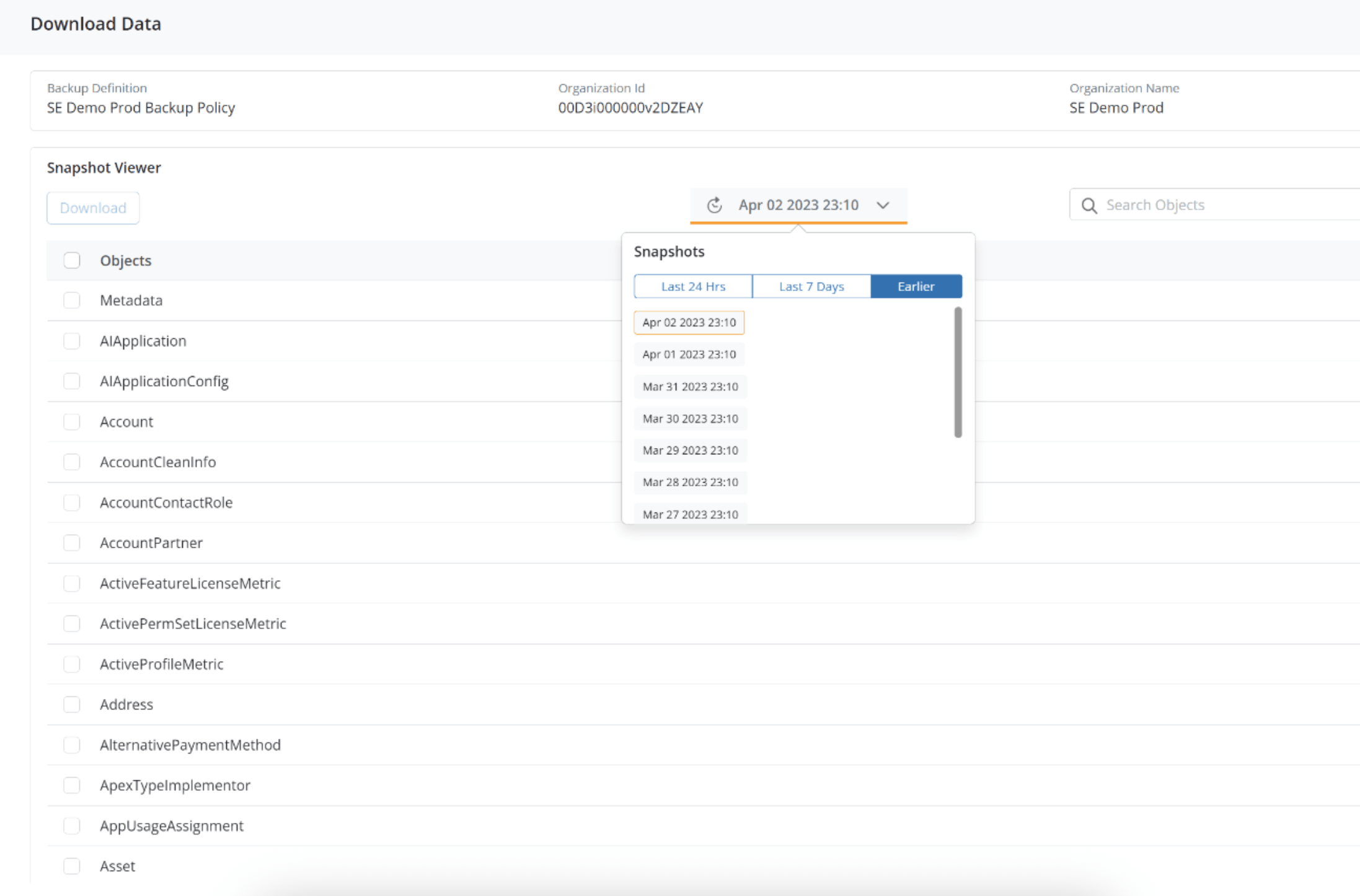
Backup solutions within DevOps platforms
This category can be easy to miss: a number of Salesforce DevOps vendors offer backup solutions for Salesforce, including as standalone products.
The connection between DevOps and backups may not be immediately obvious, so it’s worth setting out. These DevOps platforms are used by thousands of teams every day to deploy data (e.g. for sandbox seeding) and metadata (for releases) between Salesforce environments. These are fundamentally the same operations needed for restoring data and metadata to Salesforce, which is why these platforms offer the most comprehensive protection and the most reliable, intuitive restoration workflows.
While these backup solutions offer feature parity with the single-purpose tools on the market — and better performance — they’re even more effective when teams don’t treat backup as a separate tool but part of their DevOps lifecycle. The development team can more easily make sure everything’s backed up before releases. And most importantly, when recovery is required the team are totally familiar with the restore workflows — they’re the same as their daily deployment process. This has been proven to improve recovery times.
Gearset
Gearset has evolved over time to support the full DevOps lifecycle. Data backups, metadata backups, archiving, data masking, and sandbox seeding are all part of the platform, and can be purchased as standalone tools that have feature parity with Salesforce Backup and Recover.
Depending on the kind of restoration needed, teams can use four different data recovery workflows in Gearset. Metadata restoration is intuitive, with full visualization of the items being restored from backups to orgs.
When you restore data, Salesforce treats it as new record creation, potentially triggering business logic such as firing a “welcome” email to long-standing customers. To prevent these issues, Gearset helps you temporarily disable validation rules, duplicate rules, triggers, and flows during a restore.
Gearset also protects your configuration data, with support for Salesforce CPQ, Revenue Cloud Advanced, Marketing Cloud and Salesforce Industries (Vlocity).
Gearset’s backup solution costs $2.50 per Salesforce user per month for the starter license, or $3.25 for the teams license. Like other vendors, Gearset offers “contact us” pricing for enterprises.
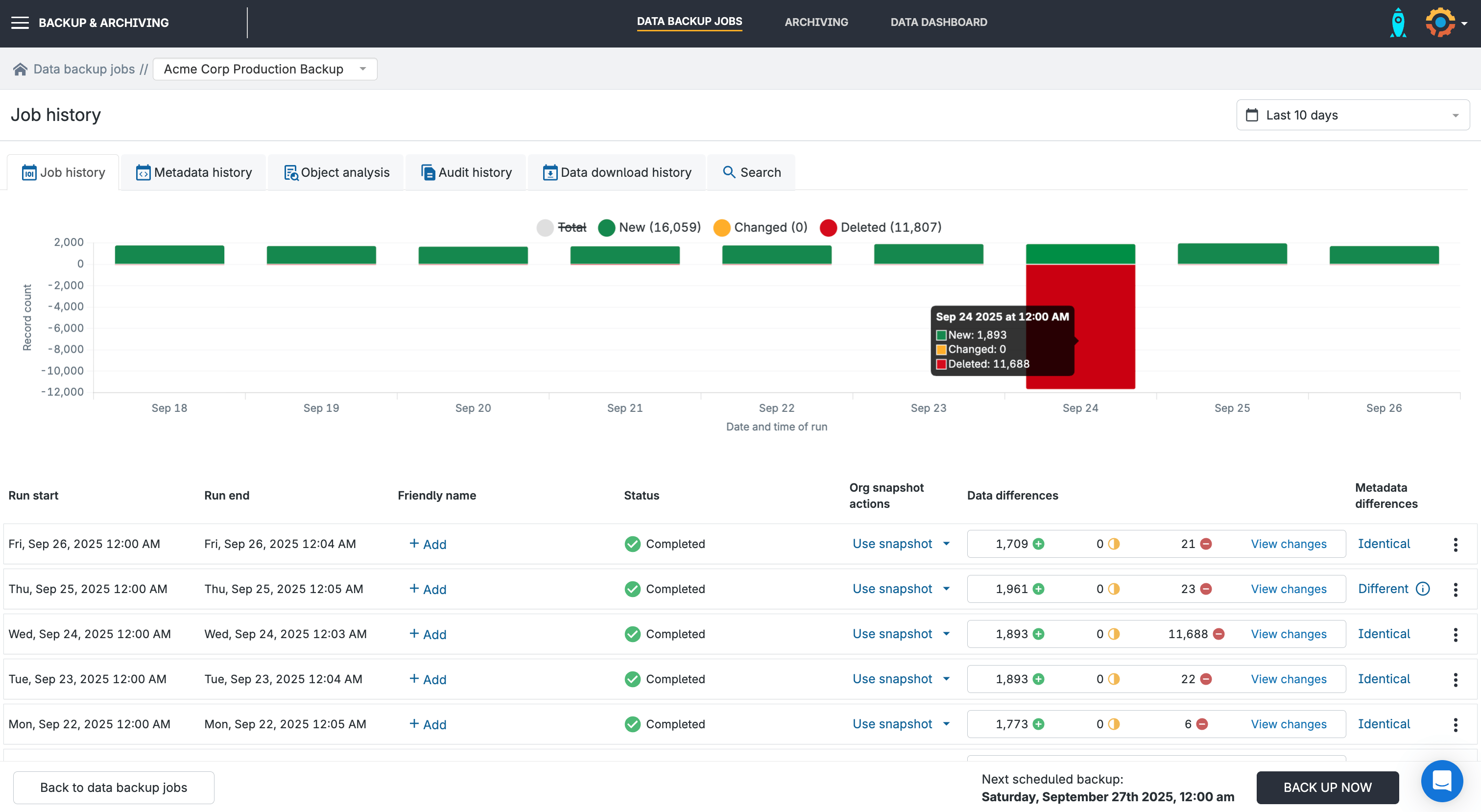
Flosum
Flosum is another DevOps vendor that offers backup and archiving. They’ve built everything on Salesforce, which means a familiar interface and inherited compliance certifications from Salesforce. But keeping backups inside Salesforce creates the same single-point-of-failure problem we saw with native tools.
Flosum’s backup tool costs $5 per Salesforce user per month, but data archiving is included in this package.
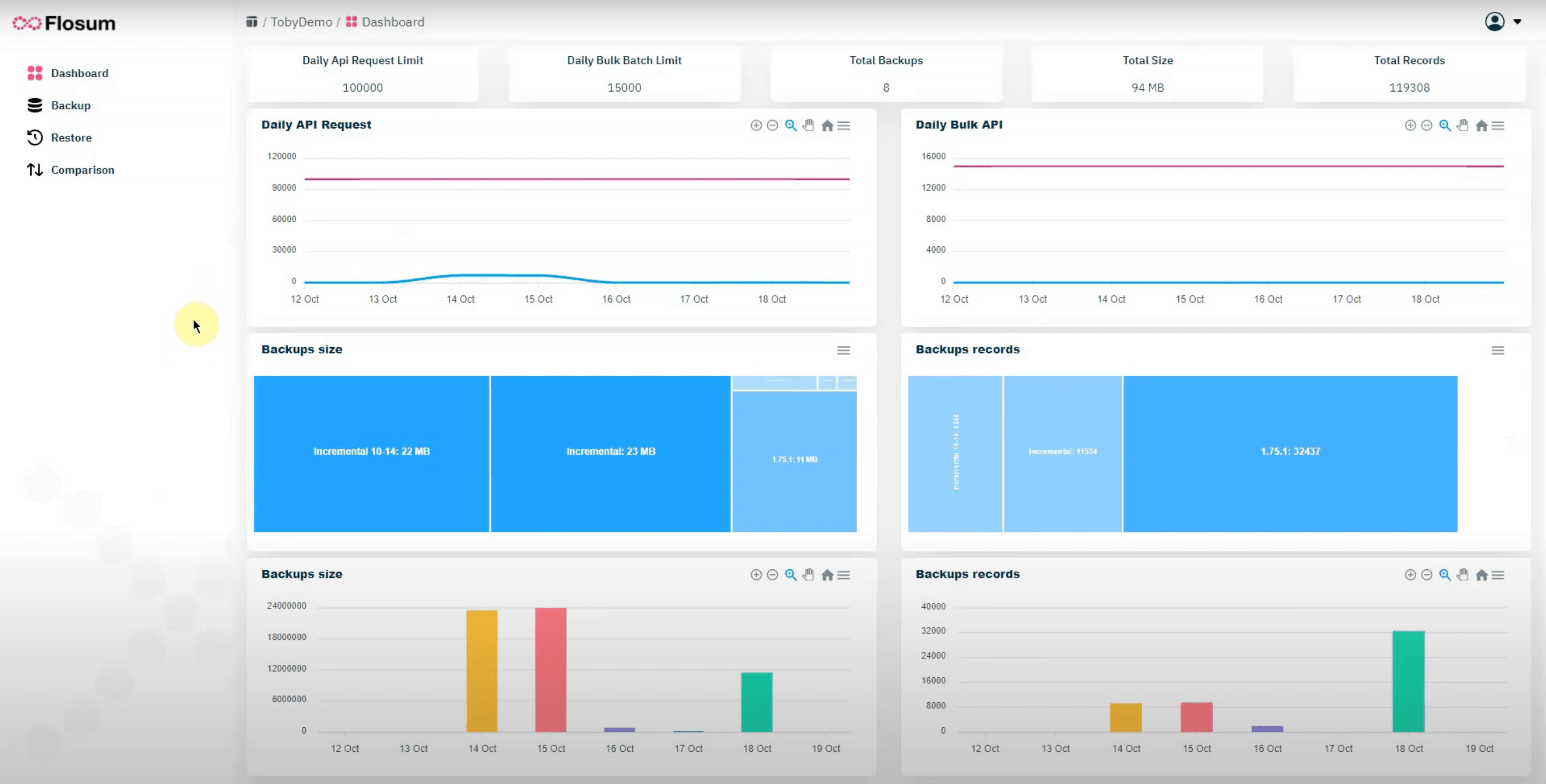
AutoRABIT
AutoRABIT positions itself as a DevSecOps partner, with backups as part of its wider DevOps toolset. Its Vault backup solution covers data and metadata — plus it supports nCino.
AutoRABIT doesn’t list prices on its website, but charges based on storage. Prices range from $17.5k per year to $235k per year.
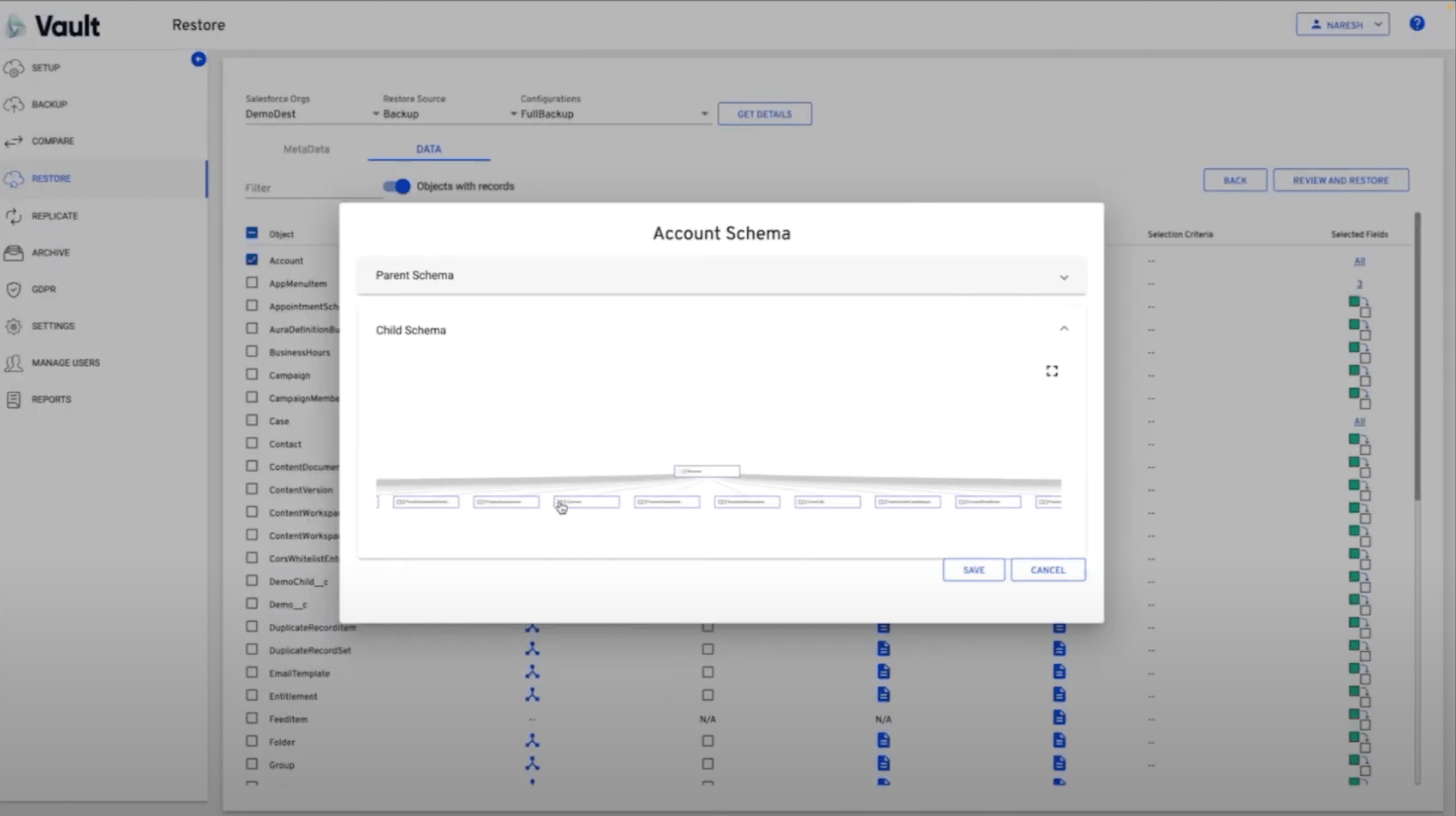
Three takeaways to guide your backup evaluation
Salesforce-specific backup solutions have been proven to outperform cross-platform backup tools
Teams using a Salesforce-specific backup tool are 41% more likely to restore within a day, while recovery times with cross-platform tools take days or weeks.
Salesforce isn’t a standard database. Its data model is extremely complex, and orgs often end up with vast amounts of custom metadata with equally complex interdependencies. Without dedicated tooling, about 50% of Salesforce metadata restores fail. Without being able to restore metadata, restoring data is often impossible.
Off-platform storage and access is a basic best practice for backups
Many first-party and third-party backup tools are built into Salesforce itself. While some vendors will argue that’s more secure because they inherit Salesforce’s security, that logic falls down when backups are actually needed because of a Salesforce outage. This creates a single point of failure — when Salesforce experiences a platform-wide issue, both production data and backups become simultaneously unavailable.
Backups must enhance your security and compliance — not introduce new risks
Basic exports of data in place of a true backup solution are supposed to secure data in the event of a loss incident. But without secure storage and compliance tools, those backups actually increase the risk of data theft or compliance breaches.
Regulatory compliance requires specific technical capabilities beyond basic backup functionality:
- Comprehensive audit trails document every backup, restore, and change event.
- Removing records across all backup runs makes it easy to handle compliance requests in line with the “right to be forgotten”.
- Data residency controls ensure compliance with geographic requirements.
- Data masking capabilities obfuscate sensitive information and PII during sandbox seeding, maintaining confidentiality and compliance.
Gearset’s approach to backup offers the best performance
We’ve surveyed a range of tools from vendors taking very different approaches to backup: Salesforce’s native tools, single-purpose Salesforce backup solutions, multi-platform backup solutions, and DevOps platforms offering backup capabilities.
Some teams will understandably choose to standardize on one backup vendor. But standardizing on one Salesforce vendor is proven to be the best option for comprehensive protection and recovery times. Without a well-tested, reliable restoration process for different scenarios, Salesforce is still at risk.
Every team looking for backup tooling should consider the DevOps vendors in the market. And for teams also looking to improve their release process, the choice becomes a no-brainer.
Already convinced? Explore Gearset’s backup solution today. If you’re looking to learn more about the nuances of backups for Salesforce, you can take the free backup course on DevOps Launchpad.